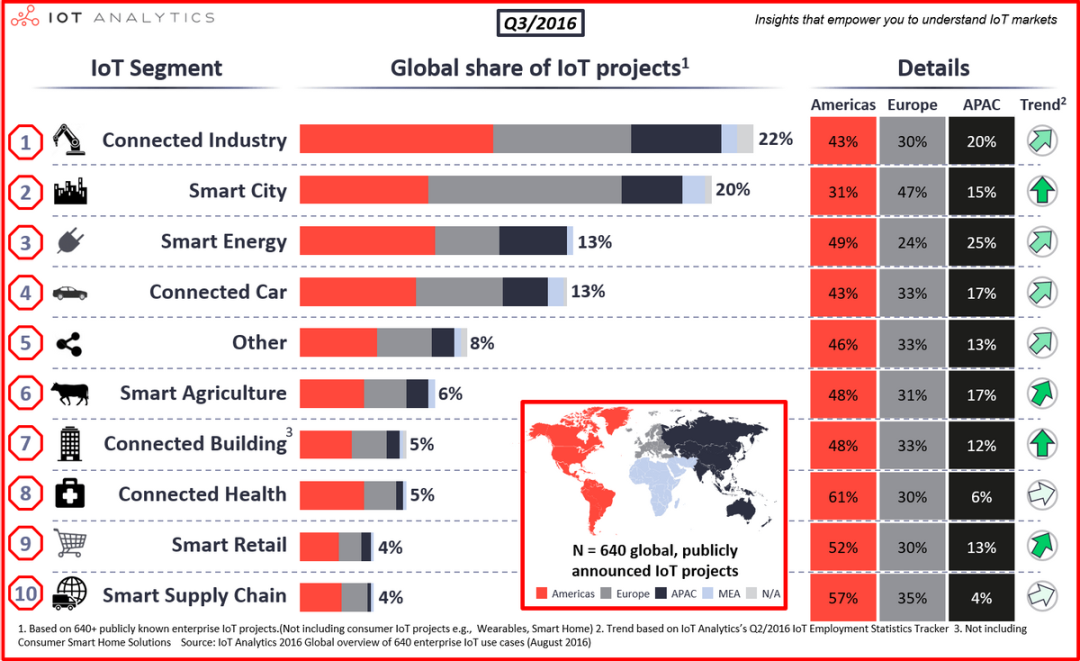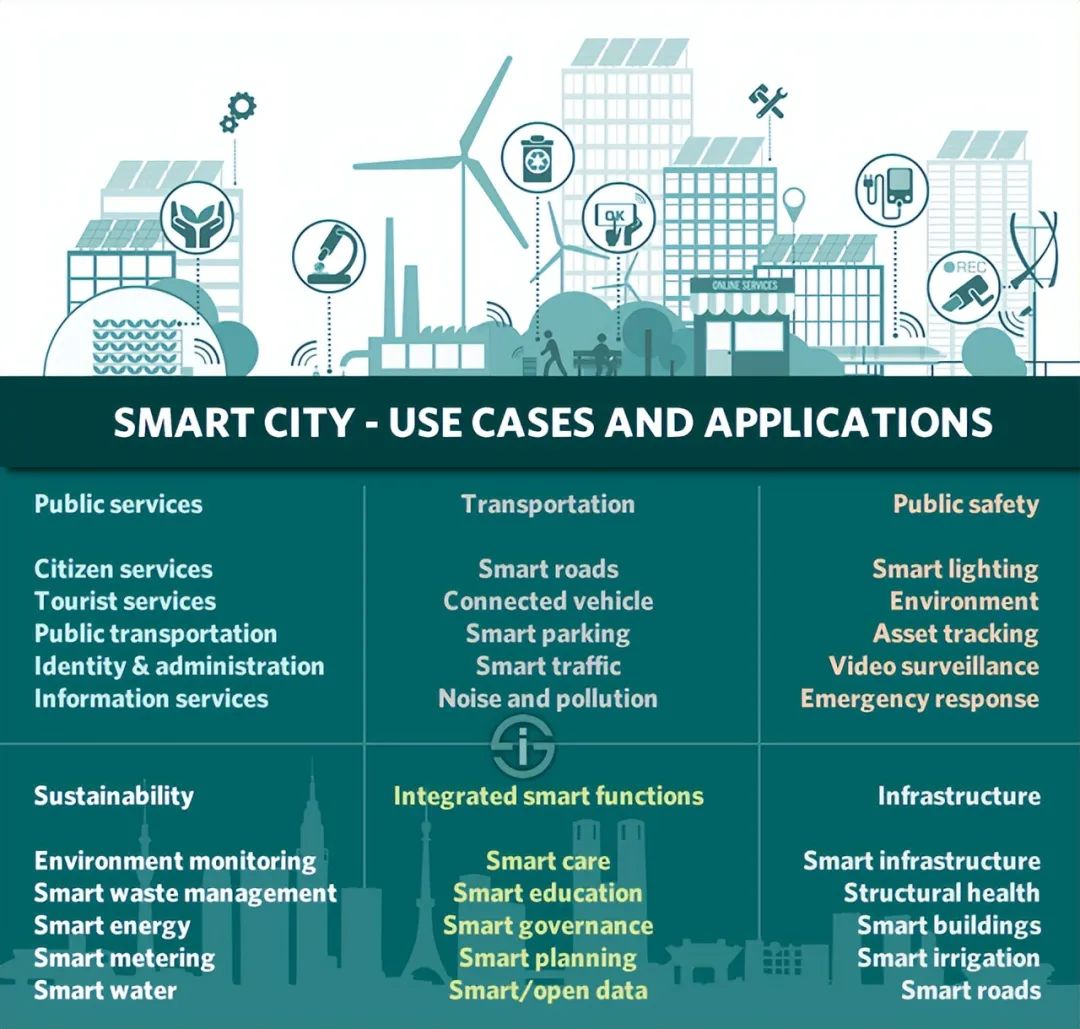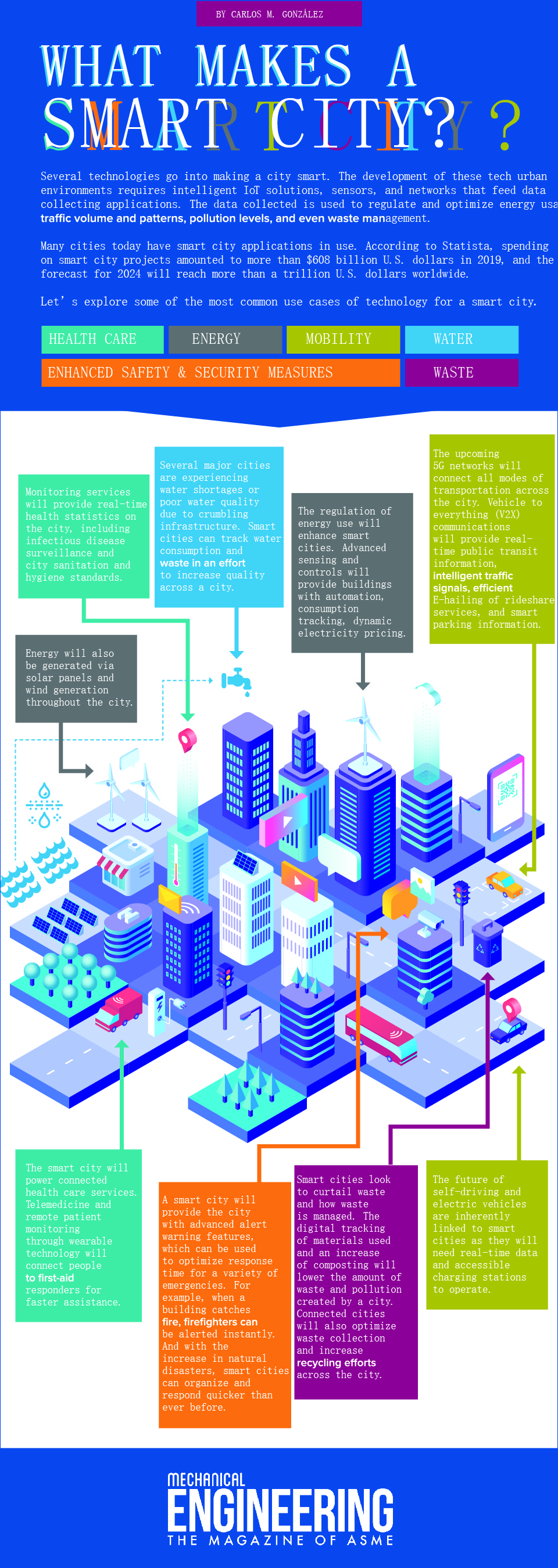In Italian writer Calvino’s “The Invisible City” there is this sentence: “The city is like a dream, all that can be imagined can be dreamed ……”
As a great cultural creation of mankind, the city carries the aspiration of mankind for a better life. For thousands of years, from Plato to More, human beings have always wished to build a utopia. So, in a sense, the construction of new smart cities is closest to the existence of human fantasies for a better life.
In recent years, under the rapid development of China’s new infrastructure tide and the new generation of information technology such as the Internet of Things, the construction of smart cities is in full swing, and the dream city that can sense and think, evolve and have temperature is gradually becoming a reality.
The second largest project in the field of IoT: Smart Cities
Smart cities and smart city projects have been one of the most actively discussed implementations, which are mainly realized through a purposeful and integrated approach to the Internet of Things, data and connectivity, using a combination of solutions and other technologies.
Smart city projects are set to increase dramatically as they accompany the transition from temporary smart city projects to the first true smart cities. In fact, this growth started a few years ago and accelerated in 2016. Among other things, it is easy to see that smart city projects are one of the leading IoT areas in practice.
According to the analysis of a report published by IoT Analytics, a German IoT analytics company, smart city projects are the second largest IoT projects in terms of global share of IoT projects, after the Internet industry. And among smart city projects, the most popular application is smart transportation, followed by smart utilities.
To become a “true” smart city, cities need an integrated approach that connects projects and glues together the majority of data and platforms to realize all the benefits of a smart city. Among other things, open technologies and open data platforms will be key to moving to the next stage.
IDC says open data platforms in 2018 are the next frontier in the discussion to become an IoT platform. While this will encounter some obstacles and there is no specific mention of smart cities, it is clear that the development of such open data platforms will certainly feature prominently in the smart city space.
This evolution of open data is mentioned in IDC FutureScape: 2017 Global IoT Forecast, where the firm says that up to 40% of local and regional governments will use IoT to turn infrastructure such as streetlights, roads and traffic signals into assets, rather than liabilities, by 2019.
What are the smart city application scenarios?
Perhaps we don’t immediately think of smart environmental projects as well as smart flood warning projects, but it is undeniable that they are crucial in smart city projects. For example, when urban environmental pollution is challenged, then this is one of the key reasons for building smart city projects, as they can provide immediate and useful benefits to citizens.
Of course, more popular smart city examples include smart parking, smart traffic management, smart street lighting and smart waste management. That said, these cases also tend to combine a mix of efficiency, solving urban problems, reducing costs, improving life in urban areas, and putting citizens first for a variety of reasons.
The following are some application scenarios or areas regarding smart cities.
Public services, such as civic services, tourism services, public transportation, identity and management, and information services.
Public safety, in areas such as smart lighting, environmental monitoring, asset tracking, policing, video surveillance and emergency response
Sustainability, including environmental monitoring, smart waste management and recycling, smart energy, smart metering, smart water, etc.
Infrastructure, including smart infrastructure, structural health monitoring of buildings and monuments, smart buildings, smart irrigation, etc.
Transportation: smart roads, connected vehicle sharing, smart parking, smart traffic management, noise and pollution monitoring, etc.
More integration of smart city functions and services in areas such as smart healthcare, smart education, smart governance, smart planning, and smart/open data, which are key enabling factors for smart cities.
More than just a “Technology” based smart city
As we begin to move toward truly smart cities, options regarding connectivity, data exchange, IoT platforms, and more will continue to evolve.
Especially for many use cases such as smart waste management or smart parking, the IoT technology stack for today’s smart city applications is relatively simple and inexpensive. Urban environments typically have good wireless coverage for moving parts, there are clouds, there are point solutions and products designed for smart city projects, and there are low-power wide area network connections (LPWAN) in multiple cities around the world that are sufficient for many applications.
While there is an important technical aspect to this, there is much more to smart cities than that. One could even discuss what “smart” means. Certainly, in the incredibly complex and comprehensive reality of smart cities, it is about meeting the needs of citizens and solving the challenges of people, society and urban communities.
In other words: cities with successful smart city projects are not demonstrations of technology, but rather goals achieved based on a holistic view of the built environment and human needs (including spiritual needs). In practice, of course, each country and culture is different, although the basic needs are quite common and involve more operational and business goals.
At the heart of anything called smart today, whether it’s smart buildings, smart grids or smart cities, is connectivity and data, enabled by a variety of technologies and translated into the intelligence that underpins decision-making. Of course, this doesn’t mean that connectivity is just the Internet of Things; connected communities and citizens are at least as important.
Given the many global challenges such as aging populations and climate issues, as well as the “lessons learned” from the pandemic, it is clear that it is more important than ever to revisit the purpose of cities, especially since the social dimension and quality of life will always be critical.
An Accenture study looking at citizen-oriented public services, which examined the use of new technologies including the Internet of Things, found that improving citizen satisfaction was indeed at the top of the list. As the study’s infographic shows, improving employee satisfaction was also high (80%), and in most cases, implementing newer connected technologies has led to tangible results.
What are the challenges to achieving a truly smart city?
While smart city projects have matured and new ones are being rolled out and deployed, it will be several years before we can truly call a city a “smart city”.
Today’s smart cities are more of a vision than a strategic end-to-end approach. Imagine that there is a lot of work to be done on activities, assets and infrastructure to have a truly smart city, and that this work can be translated into a smart version. However, achieving a true smart city is very complex because of the individual aspects involved.
In a smart city, all of these areas are connected, and this is not something that can be achieved overnight. There are a lot of legacy issues, such as some operations and regulations, new skill sets are needed, many connections need to be made, and there is a lot of alignment to be done at all levels (city management, public services, transportation services, safety and security, public infrastructure, local government agencies and contractors, education services, etc.).
In addition, from a technology and strategy perspective, it is clear that we also need to focus on security, big data, mobility, cloud and various connectivity technologies, and information-related topics. It is clear that information, as well as information management and data functions, are critical to the smart city of today and tomorrow.
Another challenge that cannot be ignored is the attitude and willingness of citizens. And the financing of smart city projects is one of the stumbling blocks. In this sense, it is good to see government initiatives, whether national or supranational, specific to smart cities or ecology, or initiated by industry players, such as Cisco’s Urban Infrastructure Finance Acceleration Program.
But clearly, this complexity is not stopping the growth of smart cities and smart city projects. As cities share their experiences and develop smart projects with clear benefits, they have the opportunity to grow their expertise and learn from potential failures. With a roadmap in mind that includes a variety of stakeholders, and this will greatly expand the possibilities of current interim smart city projects in a further, more integrated future.
Take a broader view of smart cities
While smart cities are inevitably associated with technology, the vision of a smart city is much more than that. One of the essentials of a smart city is the use of appropriate technology to improve the overall quality of life in a city.
As the planet’s population grows, new cities need to be built and existing urban areas continue to grow. When used properly, technology is critical to meeting these challenges and helping to solve the many challenges facing today’s cities. However, in order to truly create a smart city world, a broader perspective is needed.
Most professionals take a broader view of smart cities, both in terms of goals and technology, and others would call any mobile application developed by any sector a smart city application.
1. A human perspective beyond smart technology: making cities better places to live
No matter how smart our smart technologies are and how intelligent they are to use, we need to address some basic elements – human beings, mainly from 5 perspectives, including safety and trust, inclusion and participation, willingness to change, willingness to act, social cohesion, etc.
Jerry Hultin, cIoTman of the Global Future Group, cIoTman of the Smart City Expo World Congress Advisory Board, and an experienced smart city expert, said, “We can do a lot of things, but ultimately, we need to start with ourselves.”
Social cohesion is the fabric of the city that people want to live in, love, grow, learn and care about, the fabric of the smart city world. As the subjects of cities, citizens have the will to participate, to change, and to act. But in many cities, they don’t feel included or asked to participate, and this is especially true among specific populations and in countries where there is a high focus on smart city technology to improve the civic body, but less focus on basic human rights and participation.
Moreover, technology can help improve security, but what about trust? After attacks, political unrest, natural disasters, political scandals, or even just the uncertainty that comes with dramatically changing times in multiple cities around the world, there is little hope that people’s trust will be greatly diminished smart city improvements.
That’s why it’s important to recognize the individuality of each city and country; it’s important to consider individual citizens; and it’s important to study the dynamics within communities, cities and citizen groups and their interactions with the growing ecosystem and connected technologies in smart cities.
2. Definition and vision of smart city from the perspective of movement
The concept, vision, definition and reality of a smart city is in constant flux.
In many senses, it is a good thing that the definition of a smart city is not set in stone. A city, let alone an urban area, is an organism and an ecosystem that has a life of its own and is made up of many moving, living, connected components, mainly citizens, workers, visitors, students, and so on.
A universally valid definition of a “smart city” would ignore the highly dynamic, changing and diverse nature of a city.
Reducing smart cities to technologies that achieve results through the use of connected devices, systems, information networks, and ultimately insights from connected and actionable data-based intelligence is one way to define a smart city. But it ignores the various priorities of cities and nations, it ignores cultural aspects, and it places technology front and center for a variety of goals.
But even as we confine ourselves to the technological level, it is easy to lose sight of the fact that technology is also in constant and accelerating motion, with new possibilities emerging, just as new challenges are emerging at the level of cities and communities as a whole. It’s not just the technologies that are emerging, but also the perceptions and attitudes that people have about those technologies, just as they are at the level of cities, communities and nations as a whole.
Because some technologies are enablers of better ways to run cities, serve citizens and prepare for current and future challenges. For others, the way citizens are engaged and the way cities are run becomes at least as important at the technology level.
So even if we stick to the basic definition of the smart city in its technological roots, there is no reason why this cannot change, and it will effectively change as views on the role and place of technology continue to evolve.
Moreover, cities and societies, and visions of cities, not only vary from region to region, location to location, and even between different demographic groups within a city, but also evolve over time.
Post time: Feb-08-2023


